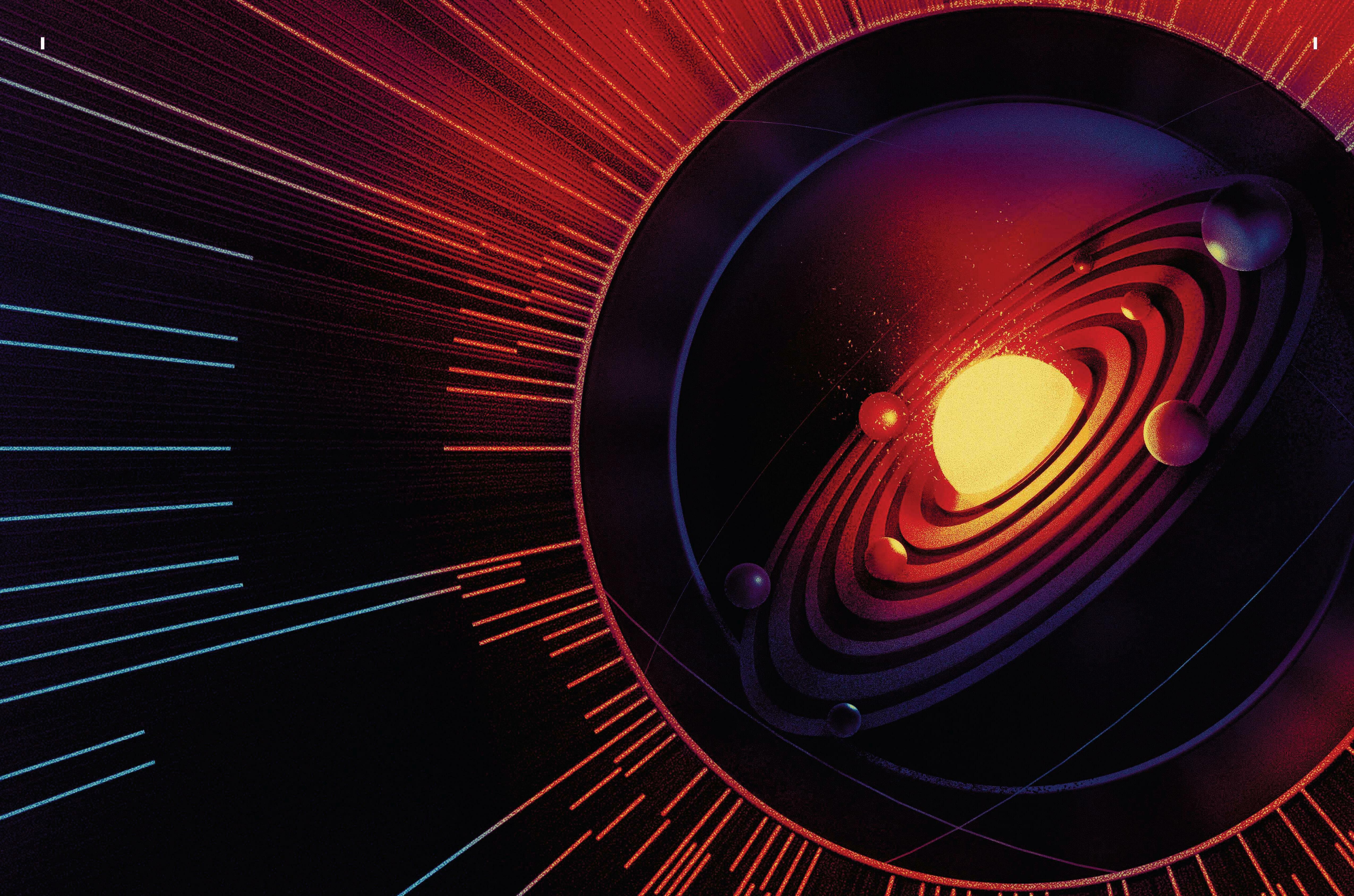Essayer OR - Gratuit
THE QUEST TO FIND THE EDGE OF THE SOLAR SYSTEM
BBC Science Focus
|November 2025
NASA's newly launched IMAP mission is set to tell us more about the boundary between our Solar System and interstellar space than ever before

Earth exists in a bubble. Our atmosphere forms a protective barrier between everything on the planet's surface and the near-empty vastness of space. But it's not the only bubble Earth sits inside. Beyond our familiar atmospheric cocoon lies a much larger bubble, an invisible boundary carved by the Sun itself.
This bubble, known as the heliosphere, is enormous. It encompasses the entire Solar System, spanning such a vast distance that only two spacecraft have ever managed to leave it. Launched in 1977, NASA's Voyager 1 and 2 passed beyond the heliosphere into interstellar space – the region between stars – in 2012 and 2018 respectively. They're the first man-made objects to ever travel beyond the Sun's protective bubble, and are still transmitting data about the charged particles and plasma waves that can be found there.
But astronomers want to learn more about the heliosphere and what lies beyond it. What's its exact size and shape? How do solar particles emitted by the Sun interact with interstellar space once they pass through it? And how effective is it at protecting us from the high-energy cosmic rays coming in from outside?
"We're still putting together a lot of pieces about how the local interstellar medium really interacts with the heliosphere," says Dr Ralph McNutt, a physicist at Johns Hopkins University Applied Physics Laboratory (JHUAPL) in Maryland, in the US.
It's hoped a new $782 million (£580 million) NASA mission will help put more of those pieces together. The Interstellar Mapping and Acceleration Probe (IMAP) spacecraft was launched on 24 September 2025. And instead of spending decades travelling to the edge of the heliosphere, over the next few months it'll travel to a position about 1.5 million kilometres (one million miles) from Earth called Lagrange Point 1 (L1). Once there, unhindered by interference from Earth, IMAP can carry out its purpose: study the heliosphere, from afar.
Cette histoire est tirée de l'édition November 2025 de BBC Science Focus.
Abonnez-vous à Magzter GOLD pour accéder à des milliers d'histoires premium sélectionnées et à plus de 9 000 magazines et journaux.
Déjà abonné ? Se connecter
PLUS D'HISTOIRES DE BBC Science Focus

BBC Science Focus
PASS THE PLASTIC
All of us are ingesting microplastics. Could dietary fibre help us get it out?
3 mins
November 2025

BBC Science Focus
Finally... An EV worthy of your bedroom wall
Ferrari's new Elettrica could be the car that gets dyed-in-the-wool petrolheads to long for an EV. It could also be the car that reshapes the entire EV landscape
4 mins
November 2025

BBC Science Focus
THE PUDU
Just when you thought Bambi couldn't get any cuter, meet the pudu, the world's smallest deer. Standing little taller than a domestic cat, what it lacks in size, it more than makes up for in allure. Doe-eyed, button-nosed, with little legs and perky ears, this diminutive South American mammal looks like it has stepped straight out of a Disney film.
2 mins
November 2025

BBC Science Focus
60-year mystery of the fossil skull that baffled scientists may finally be solved
The Petralona skull was discovered in Greece in 1960, yet its origin has perplexed experts – until now
2 mins
November 2025

BBC Science Focus
Only 1% of the world is eating a healthy and sustainable diet
A major report found healthier diets could transform the food system
3 mins
November 2025

BBC Science Focus
COLD AND FLU SEASON
Nobody enjoys being stuck in bed sneezing and coughing the days away. But there are steps you can take to increase your chances of avoiding these winter ailments
4 mins
November 2025

BBC Science Focus
There's another diabetes in town, here's how to recognise it
Misdiagnosis rates for this rare type of diabetes could be complicating treatment for patients
5 mins
November 2025

BBC Science Focus
THE QUEST TO FIND THE EDGE OF THE SOLAR SYSTEM
NASA's newly launched IMAP mission is set to tell us more about the boundary between our Solar System and interstellar space than ever before
7 mins
November 2025

BBC Science Focus
WHICH VAPE FLAVOUR IS WORSE FOR YOU?
If you're trying to quit smoking, you'll have probably heard talk that switching to e-cigarettes - or vapes - is a healthier option. One study by researchers at University College London estimated that in 2017 alone, over 50,000 people stopped smoking thanks to their use of e-cigarettes.
2 mins
November 2025

BBC Science Focus
WANTED: GUT BACTERIA DEAD OR ALIVE
There are millions of bacteria living in our guts. There are millions of dead bacteria there too. And scientists are learning just how much potential the dead ones have to improve our health
7 mins
November 2025
Listen
Translate
Change font size
